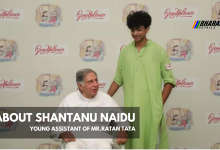Different Types of Trademarks & its Importance

A Trademark serves as a sign of where a business’s brand comes from. In India, there are various types of trademarks that help identify the quality and source of a product or service. This prevents customers from getting confused about recognizing a brand. Trademarks give a business its unique identity, setting it apart from competitors and building customer loyalty.
Trademarks can be symbols, words, designs, or logos. If a business has multiple trademarks representing it, separate applications must be filed for each one. For instance, if a business wants to protect both its brand name and logo as trademarks, it needs to file separate applications for each.
Contents
What is a Trademark?
According to the Indian Trademarks Act of 1999, in Section 2(zb), a trademark is a form of intellectual property. It distinguishes products or services from others by using a recognized symbol, design, or expression. Any individual, corporation, or legal entity can own a trademark. If someone intends to use a brand name for commercial purposes, they must file for trademark registration to prevent others from using the same or similar brand names for their products or services.
Types of Trademarks in India
Trademarks help recognize the source or creator of a product or service. Businesses have various options for trademarks, like logos, names, taglines, and product brands. Yet, using a mark similar to an existing one is not allowed. For instance, soft drink companies cannot use logos or names resembling Coca-Cola’s.
The different types of trademark in India:
1. Word Marks:
A word mark consists of words, letters, numbers, or anything written in standard characters, like a brand name, slogan, or tagline. In simple terms, if someone wants to register only the letters, words, or combinations of words or numbers without any artistic or pictorial representation, they can register it under the word mark category. The main advantage of a word mark is its flexibility. Once registered, it can be used in any design, style, or font. Examples of word marks include Microsoft, Tata, KFC, and IBM.
2. Device Marks:
A device mark comprises any label, sticker, monogram, logo, or geometric figure, with or without words in it. It can even involve colors, but if registered with colors, the same combination must be used for trademark protection. Device marks are attention-grabbing and appealing, making them easy for the public to recall. Unique devices aid in business recognition because people may not remember the name but can easily recall the logo. For example, the Apple logo is a notable device mark.
3. Sound Marks:
Sound marks are trademarks distinguished by their unique sounds. They’re recognized by hearing rather than seeing. Sound marks uniquely identify the commercial source of products or services. As per new provisions, submitted sounds must be in MP3 format, not longer than 30 seconds, and accompanied by visual representations of sound notations. YAHOO was the first global company to register a sound trademark. In India, ICICI Bank was the first to register sound as a trademark. Some registered sound marks in India include: [provide examples].
- Yahoo – (Human voice yodelling Yahoo)
- National Stock Exchange – (Theme song)
- ICICI Bank – (Corporate jingle – Dhin Chik Dhin Chik)
- Britannia Industries (Four note bell sound)
- Cisco – (Tune heard on logging in to the conferencing service Web Ex)
- Edgar Rice Burroughs – (Tarzan Yell by its toy action figure)
- Nokia – (Guitar notes on switching on the device)
4. Three dimensional trademark:
Trade dress encompasses both the shapes of goods and their packaging. It’s a non-traditional trademark. To register it, the shape of goods or packaging must be notably different from competitors in the market. It should be distinctive enough for the public to recognize the origin of the goods, even without other word marks. In essence, it should function as a trademark.
5. Color Trademark:
The Trademark Act allows the registration of color combinations to represent goods and services. When distinctiveness is claimed in a combination of colors, with or without a device, it’s called a color mark. In trademark law, a color can be considered distinctive when the public recognizes a product or brand by a particular color combination alone. In this case, the color becomes the brand. According to Section 10 of the Trademark Act, 1999, a color trademark can be a single color or a combination of colors. However, Section 2(1)(m) of the Trademarks Act, 1999 specifies that a mark must be a ‘combination of colors,’ indicating the legislature’s intention not to allow single-color trademarks. Therefore, it’s advisable to file for a combination of colors as a trademark. If a trademark is registered without color limitations, it’s considered registered for all colors.
6. Smell Marks:
If a smell is unique and easily distinguishable from other products, it can be recognized as a smell mark. Perfumes are a good example of this.
7. Shape of goods:
Trademarks can be registered for the shape of goods if they have a unique shape. However, they cannot be registered if the shape:
- Arises naturally from the nature of the goods themselves,
- Is necessary to achieve a technical result,
- Adds substantial value to the goods.
Shapes of goods are considered non-conventional trademarks.
In summary, consumer recognition and acquired distinctiveness are crucial factors in granting non-conventional trademarks like the shape of goods, 3-dimensional trademarks, sound marks, and smell marks. When considering registration for non-conventional trademarks, the registry must balance the convenience of the applicant with other traders who may be using elements of such trademarks in good faith.
Selection of Brands and its overview
Not all brand names are equal. Some brand names have more impact than others. Your brand’s position on the “spectrum of distinctiveness” determines this. Trademarks vary from generic and descriptive to suggestive, arbitrary, and fanciful.
Let’s delve into the concept of uniqueness so that individuals or businesses can choose a strong brand for their future goods and services or assess whether their current brand is inherently strong.
1. Generic Mark:
The Generic mark, is considered as the brand’s weakest form as it refers to the class of product or services. A brand becomes generic once it enjoys immense popularity and widespread recognition and the consuming public starts recognising the class of product and services with the brand itself and it loses its connection with the company that first created it. In most cases, it is just a generic phrase that everyone uses to refer to a certain product or service that you offer.Some brands start as ordinary brands and then become generic as they are utilized are band aid.
2. Descriptive Mark:
In this category, trademarks no longer just describe goods and services using common words, but they highlight characteristics or quality of a product. You can apply for registration for descriptive marks by proving that your brand has earned distinctiveness. This means showing that when people hear or see your brand, they think specifically of your products or services, not just any product or service with similar features. Brands with descriptive trademarks often have a wide market reach and become recognizable trademarks for their owners. Examples include KFC, American Airlines, Whirlpool, Louis Vuitton, and Pepsi.
3. Suggestive Mark:
These marks go beyond generic and descriptive ones. They offer suggestions to consumers about products or services. They give more precise references to the traits and characteristics of goods and services. A good example is the telephone logo of Whatsapp LLC.
4. Arbitrary Mark:
Arbitrary marks are words from the dictionary used to represent goods and services that have no connection to the words themselves. Examples include ‘Apple’ and ‘Adobe.’ In simpler terms, arbitrary marks are considered highly effective because they don’t relate to the goods or services they represent.
5. Fanciful Mark:
These marks are created words or terms that only signify specific items or services and have never been used before. For instance, ‘KODAK’ simply represents a photography brand, and ‘Twitter’ is just the name of a social media platform. Other examples include ‘Walmart,’ ‘Pepsi,’ ‘Marlboro,’ ‘Audi,’ ‘Ola,’ and ‘Uber,’ all of which are excellent examples of fanciful marks.
Companies and trademark experts can use the five categories mentioned earlier to determine which group their brand falls into. When creating a new brand for your company, ensure that your products and services align with it. Select a unique brand name and avoid using generic or descriptive words as your trademark.
Also Read ➡️ How to Get Trademark, Registration Process & Validity
FAQs
Q1: What are the features of a good trademark?
Ans: A good trademark should be unique, easy to remember, not too descriptive, flexible, and not offensive.
Q2: Which Type of Trademark cannot be used?
Ans: You can’t use trademarks that are generic, too descriptive, or offensive or immoral.
Q3: What type of Trademarks are the easiest to protect?
Ans: Fanciful, arbitrary, and suggestive trademarks are the easiest to protect.
Q4: What are collective marks?
Ans: Collective marks are trademarks that organizations or groups use to show where goods or services come from or their quality, all from their members.
Q5: What types of Trademarks are used to define standards?
Ans: Certification marks are a kind of trademark that shows standards, indicating that products or services meet specific criteria or quality standards.
For similar news update stay tuned and follow us on Instagram, Facebook and Twitter
Explore the Latest in: Cricket News | Sports News | National News | Celebrity News | Technology Updates

